Setup time: 5 Min
Create Outbound Integration
- Click on
Integrations > Outboundto navigate to the outbound integrations page. - Once you’re on the Outbound Integrations page, click on
Create New Outbound Integrationin the top-right corner.
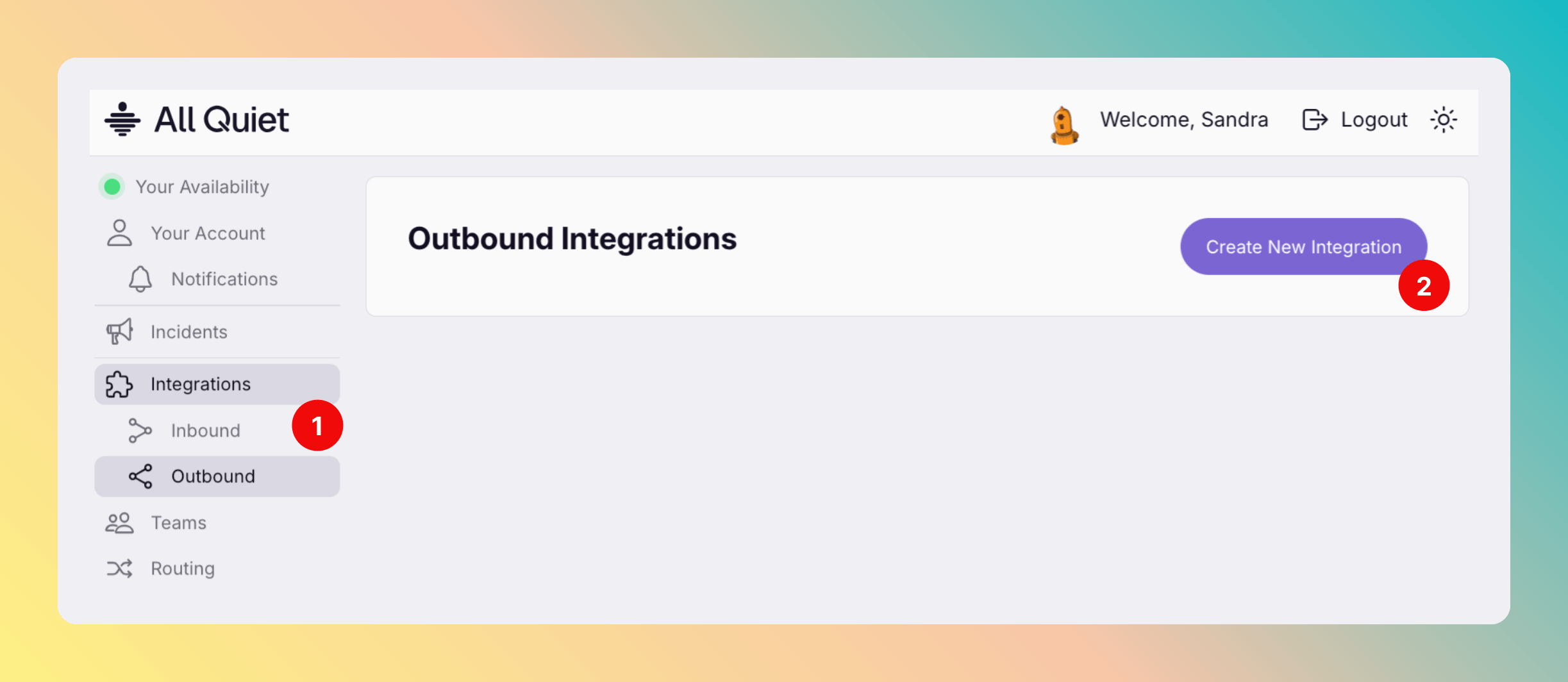
- In the Display Name field, provide a name for your integration. For instance, you can name it “Our Zapier Integration”.
- Select the
Teamfor which you want to set up the integration.For Organizations with Pro and Enterprise plan: This is going to be the root team of your integration. You will be able to add additional teams that will be able to create Zap Triggers (outbound) with this integration in the next step. - Under the Type section, select “Zapier” from the dropdown menu.
- Once you’ve provided all the necessary details, click on the
Create Outbound Integrationbutton to complete the setup.
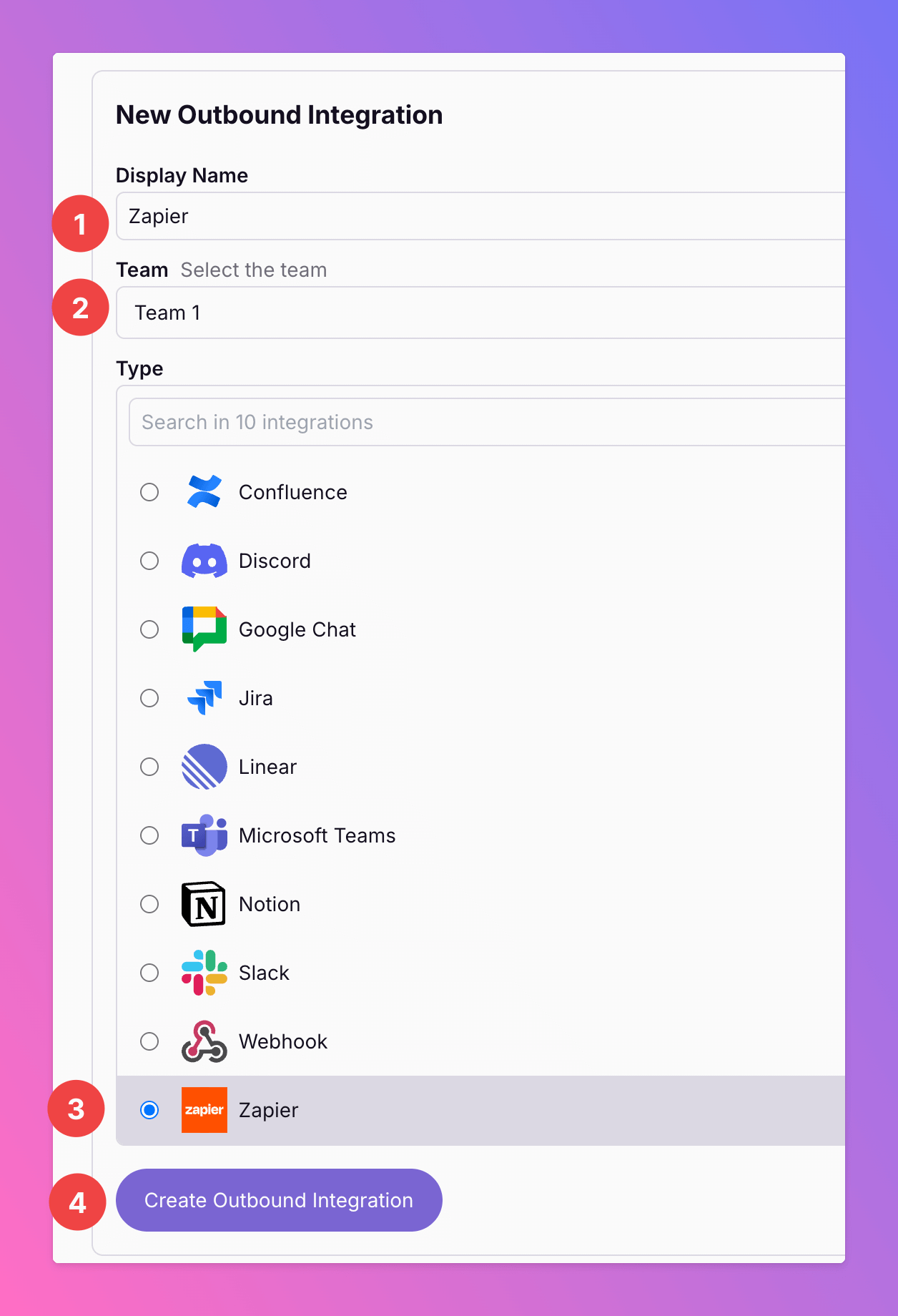
-
- The option
Trigger Alwaysis enabled by default. This means that we will forward all incidents to your Zaps, unless excluded by additional advanced routing rules. - When selecting
Trigger Always After Forwarding, we will not automatically send incidents to your Zaps. Requests will only be sent if users manually forward specific incidents or if you set up advanced routing rules for your Zapier integration that automatically forward incidents in specific scenarios. After Forwarding, all updates of the incident will also be pushed to Zapier. - When selecting
Trigger Only On Forwarding, we will only forward a snapshot of the current incident history to your Zaps in the moment users manually forward specific incidents or if you set up advanced routing rules for your Zapier Outbound integration that automatically forward incidents in specific scenarios. We will not send any incident updates to your Zaps, afterwards. - You can change your selection anytime.
- The option
- You receive the
Integration IDthat you will need on Zapier’s site to connect with All Quiet. - You receive the
Webhook Secretthat you will need on Zapier’s site to connect with All Quiet, too.
Only for Pro and Enterprise plan - Connect the Integration with several teams: The root team is pre-selected, and you can add the integration to further teams within the root team’s organization. Team Administrators can add / remove those teams they are an admin in, Organization Administrators & Organization Owners can manage the connections to all teams of the organization.
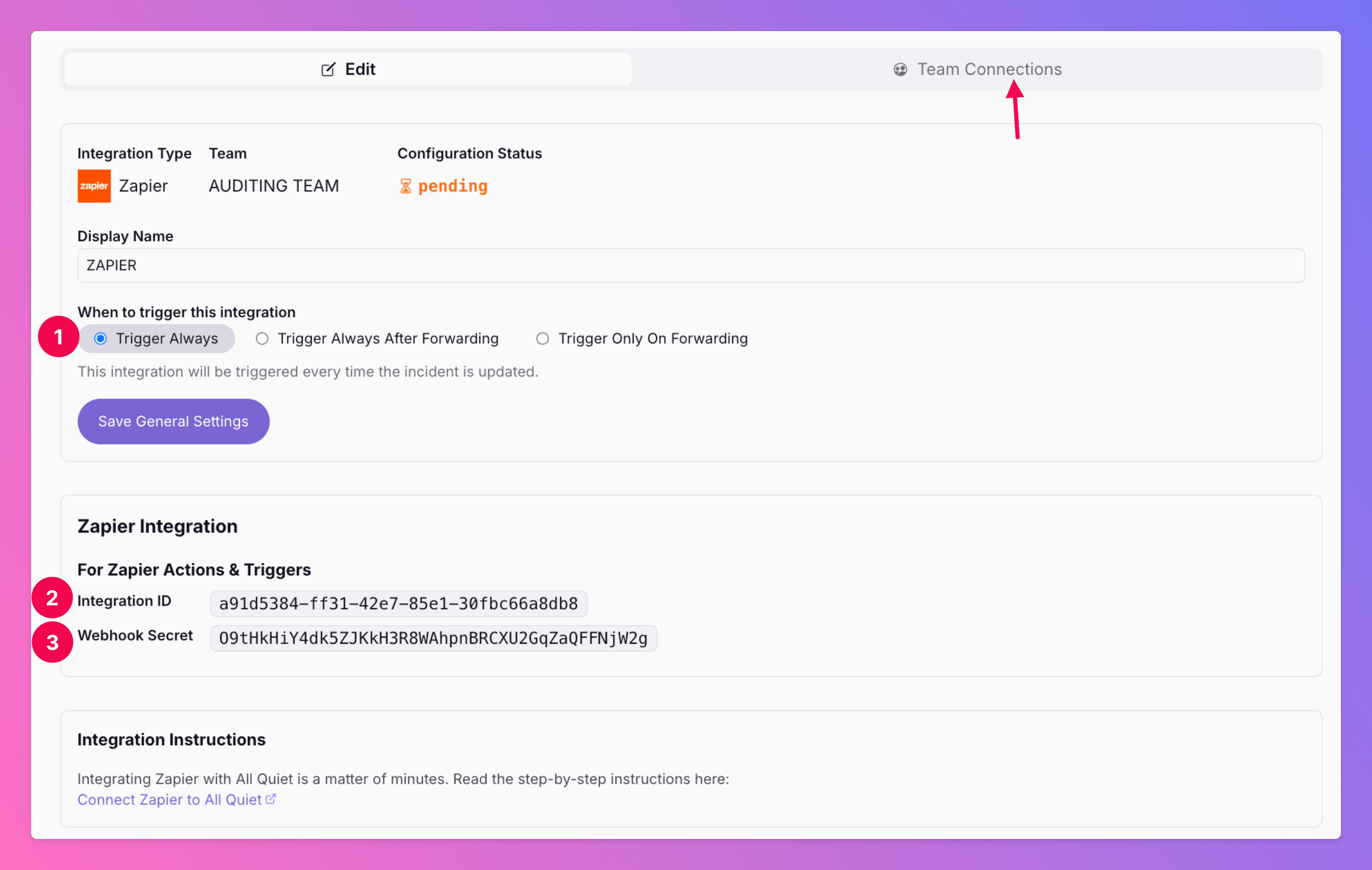
Use All Quiet as a Trigger in Zapier
You can use Zapier to connect other outbound tools to your All Quiet workflows than those for that we have direct outbound integrations already. First, log in to your Zapier account.- On the home screen, click
Create. - Select
Zaps.
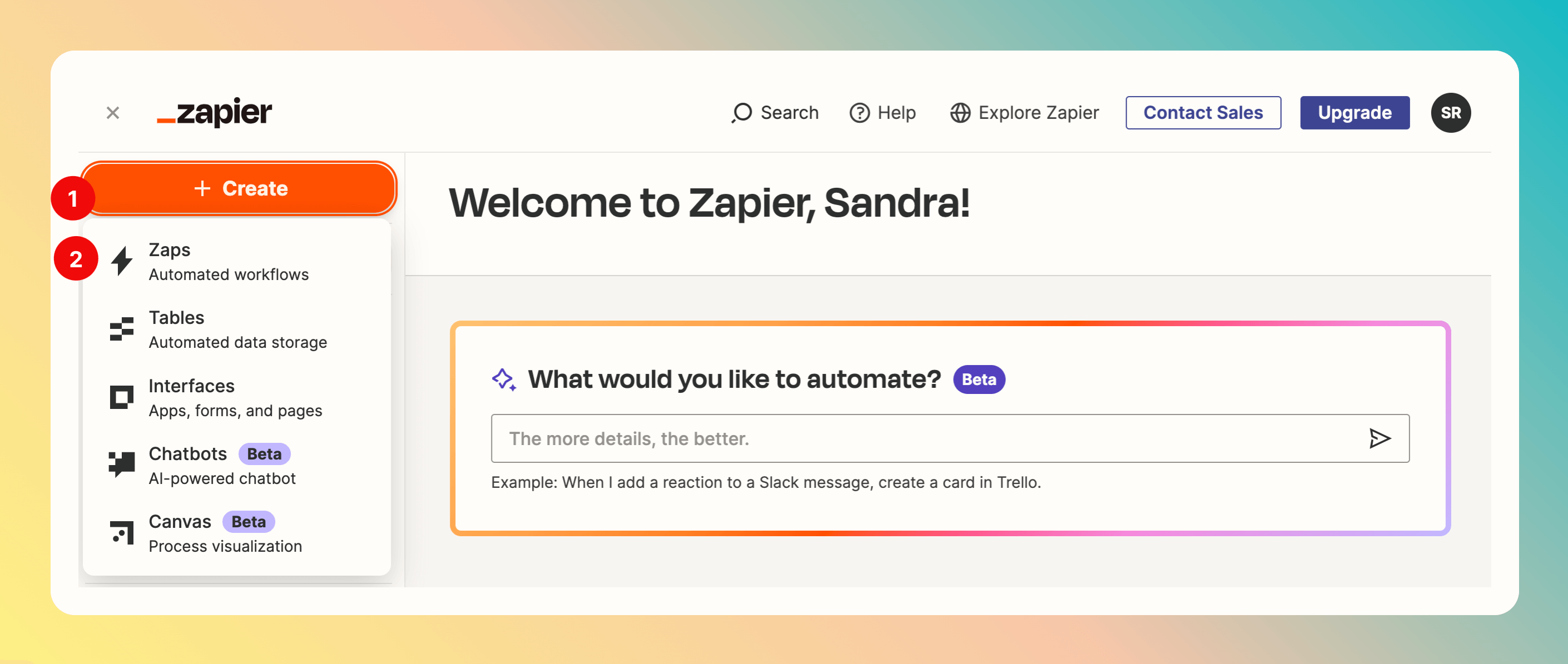
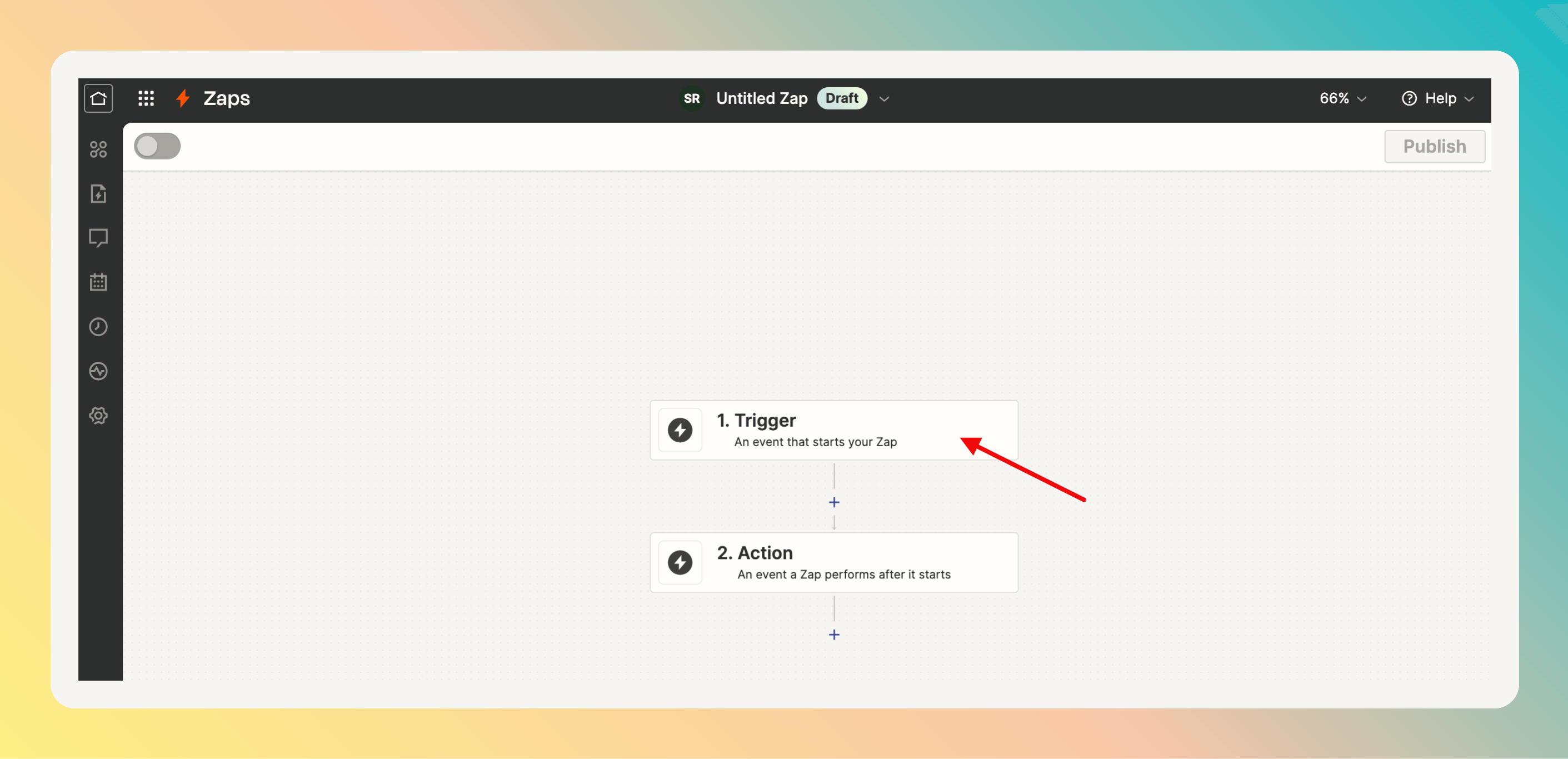
- Search for
All Quiet. - Select it.
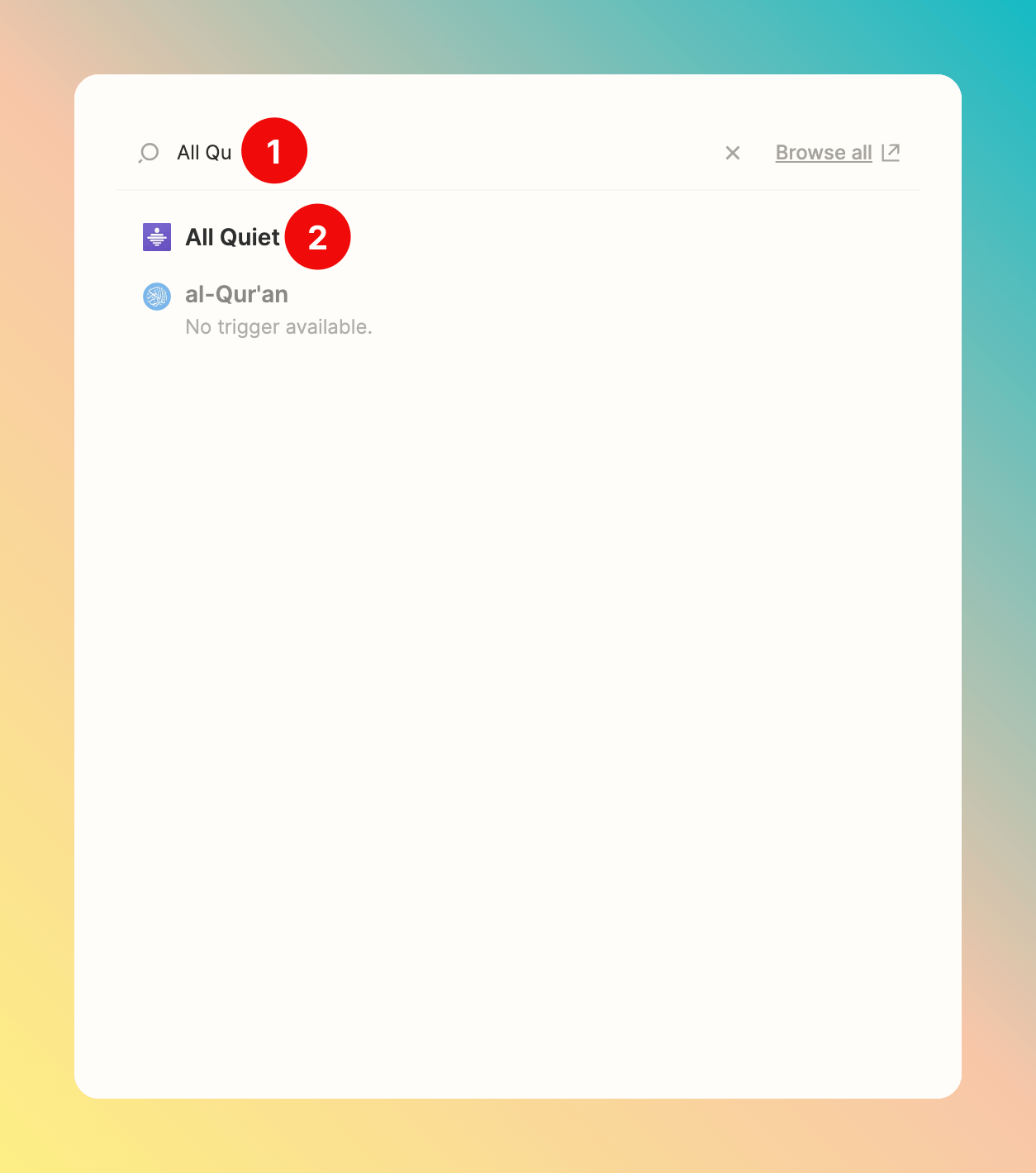
- After selecting the app, you need to choose an Event. As you selected All Quiet as a Trigger, you can only select
New Incident Intent. - After selection, click
Continue.
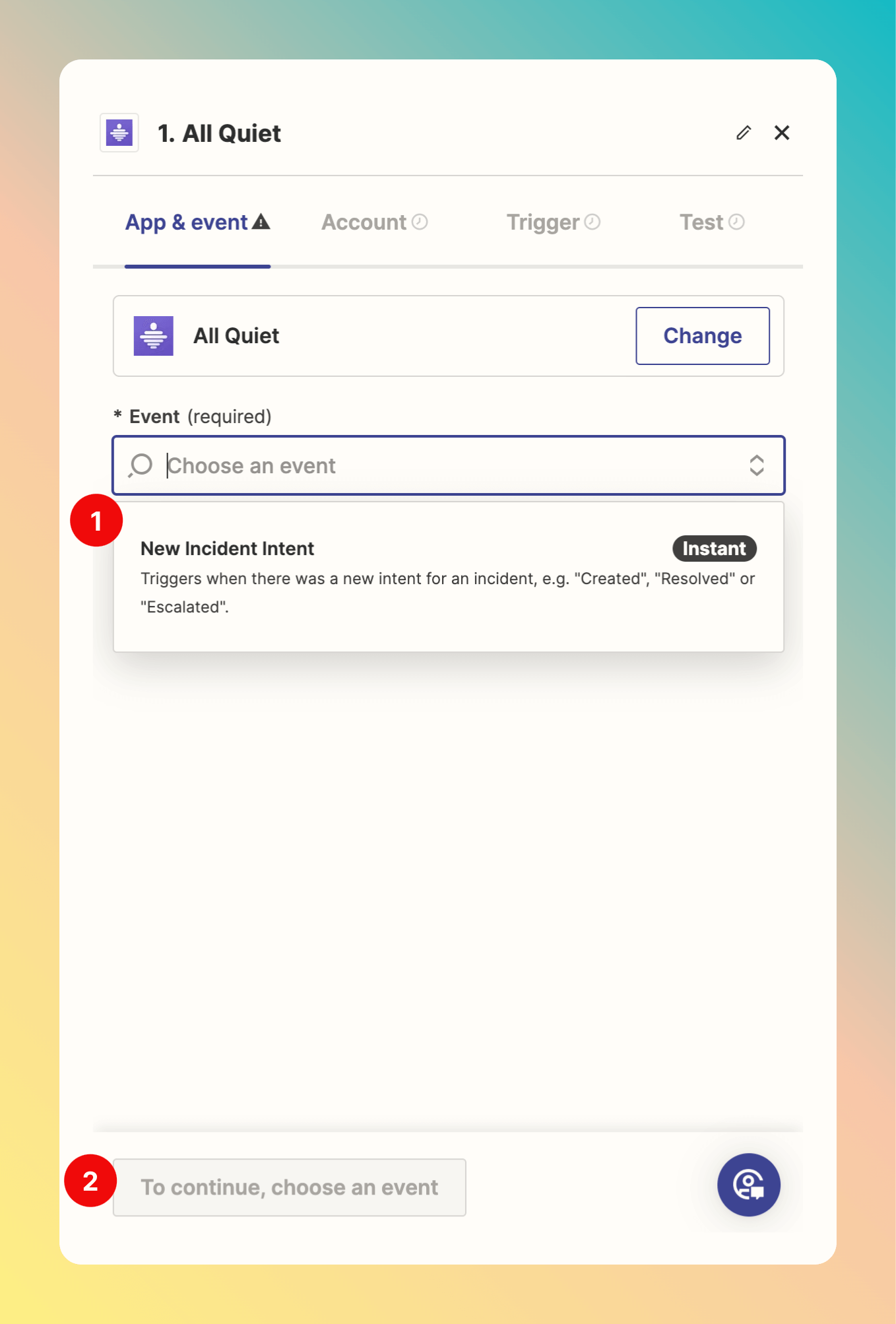
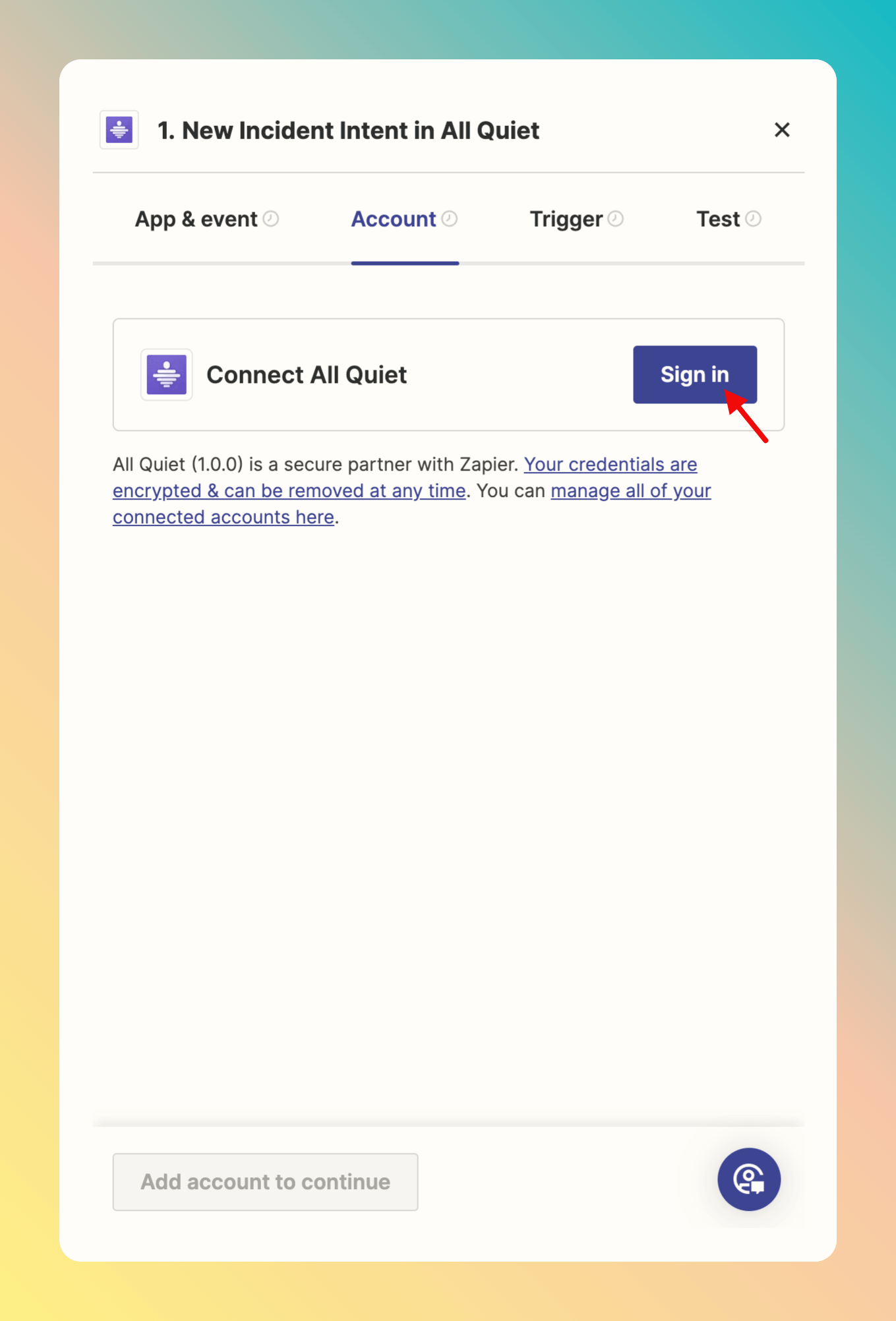
- Integration ID and
- Webhook Secret that you received after creating the outbound integration in All Quiet.
- Also, provide your
Data Storage Region, eitherUSorEU. - After providing the credentials, click
Yes, Continue to All Quiet.
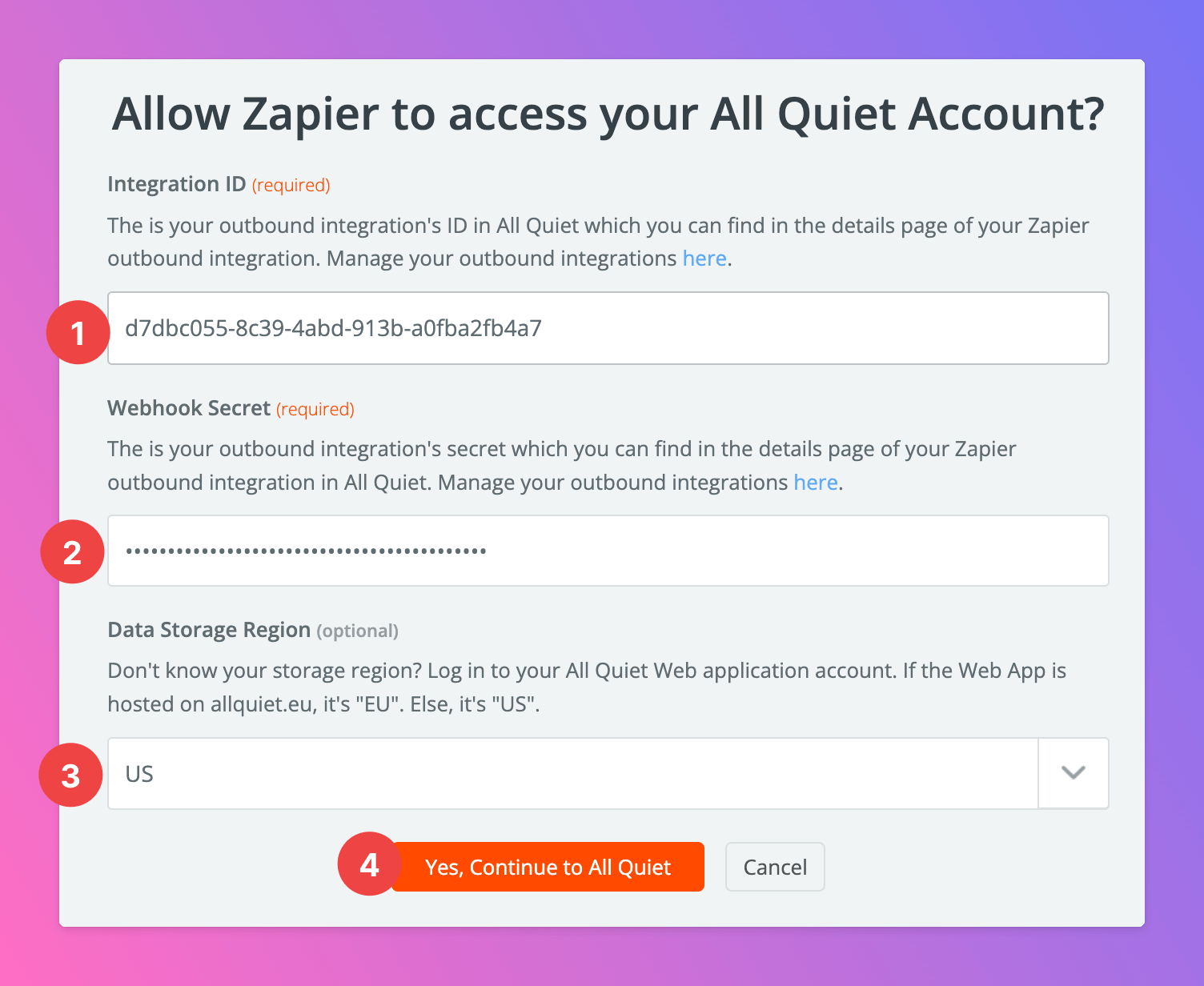
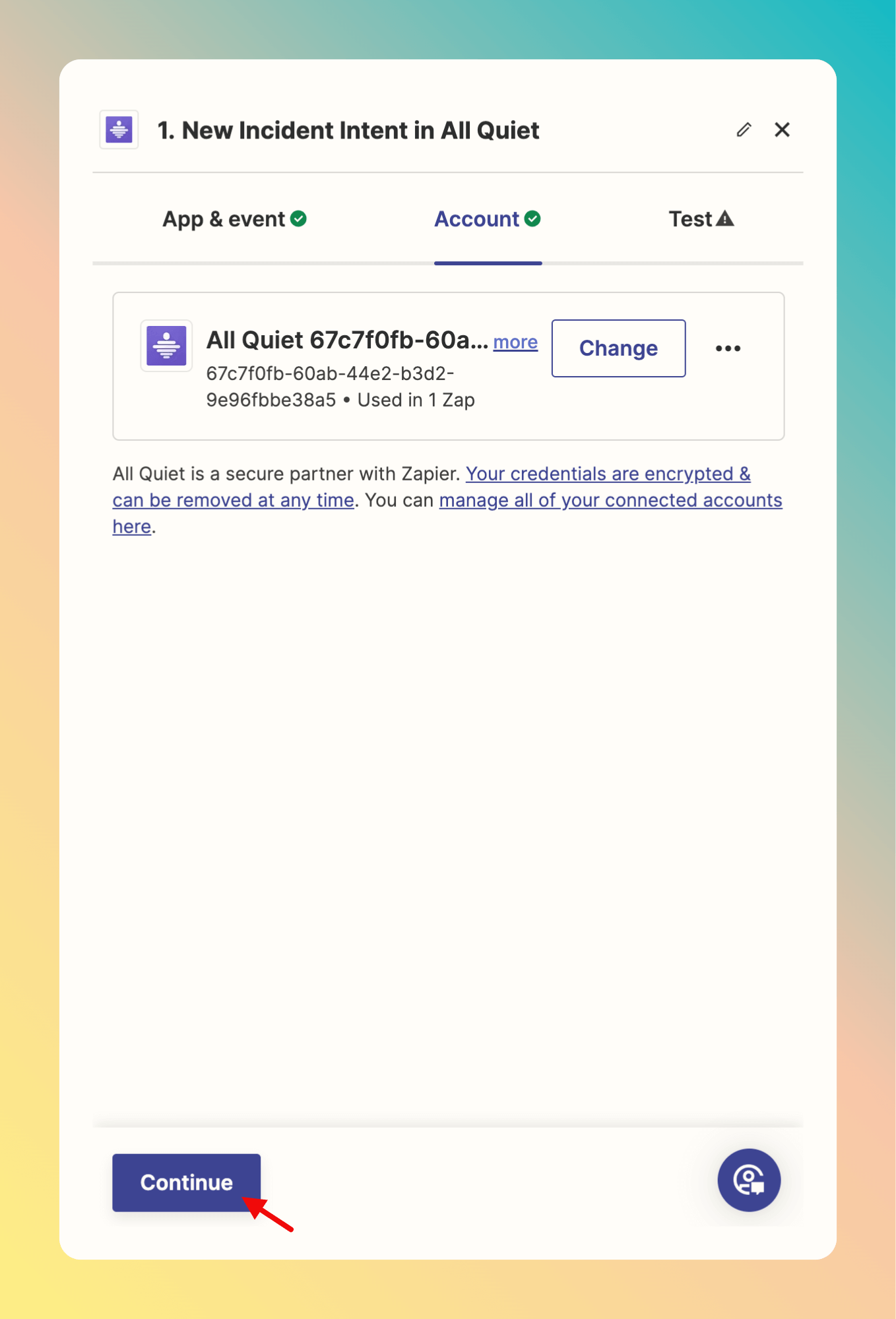
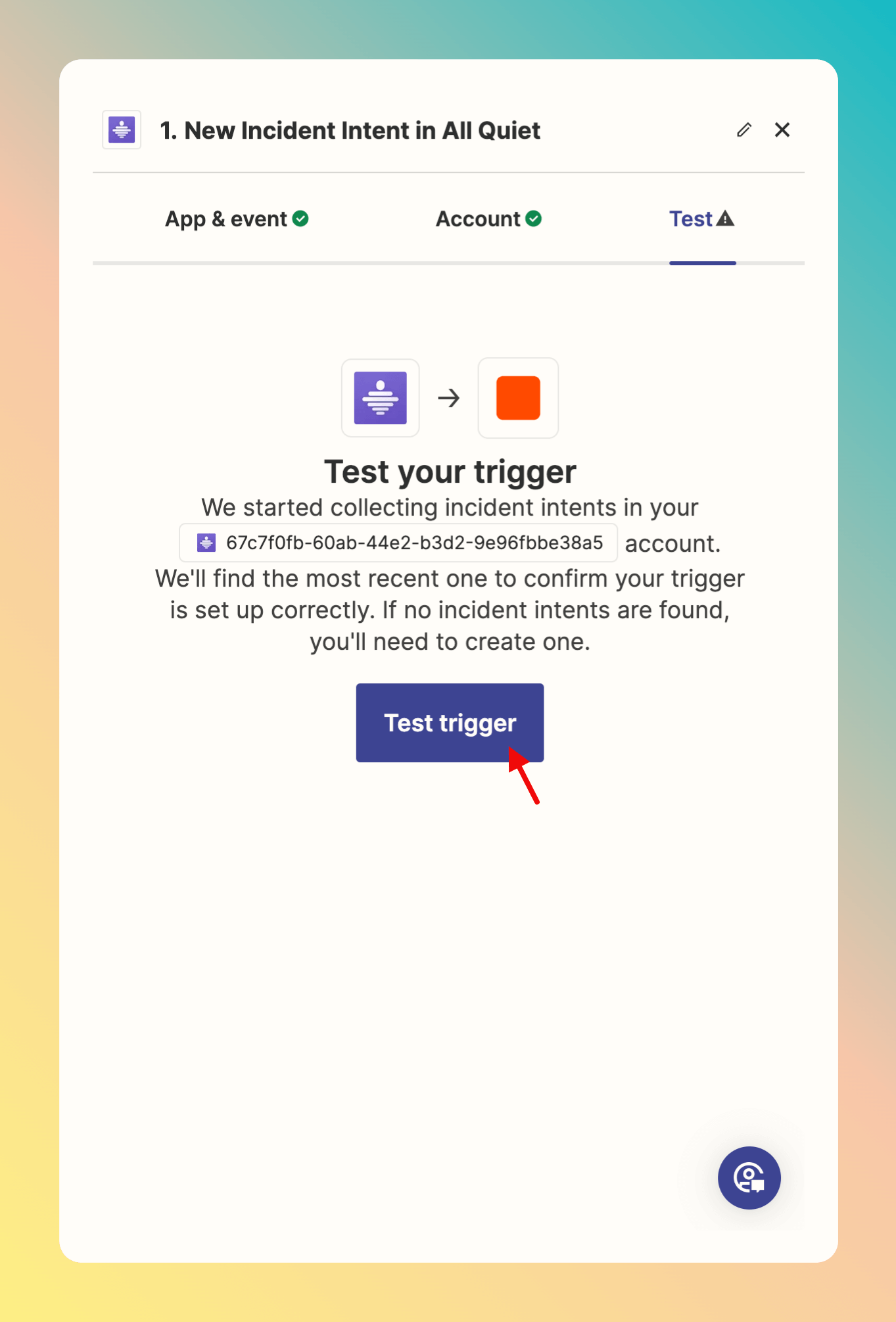
- You can select a payload that you would like to use for the test.
Continue with selected record.
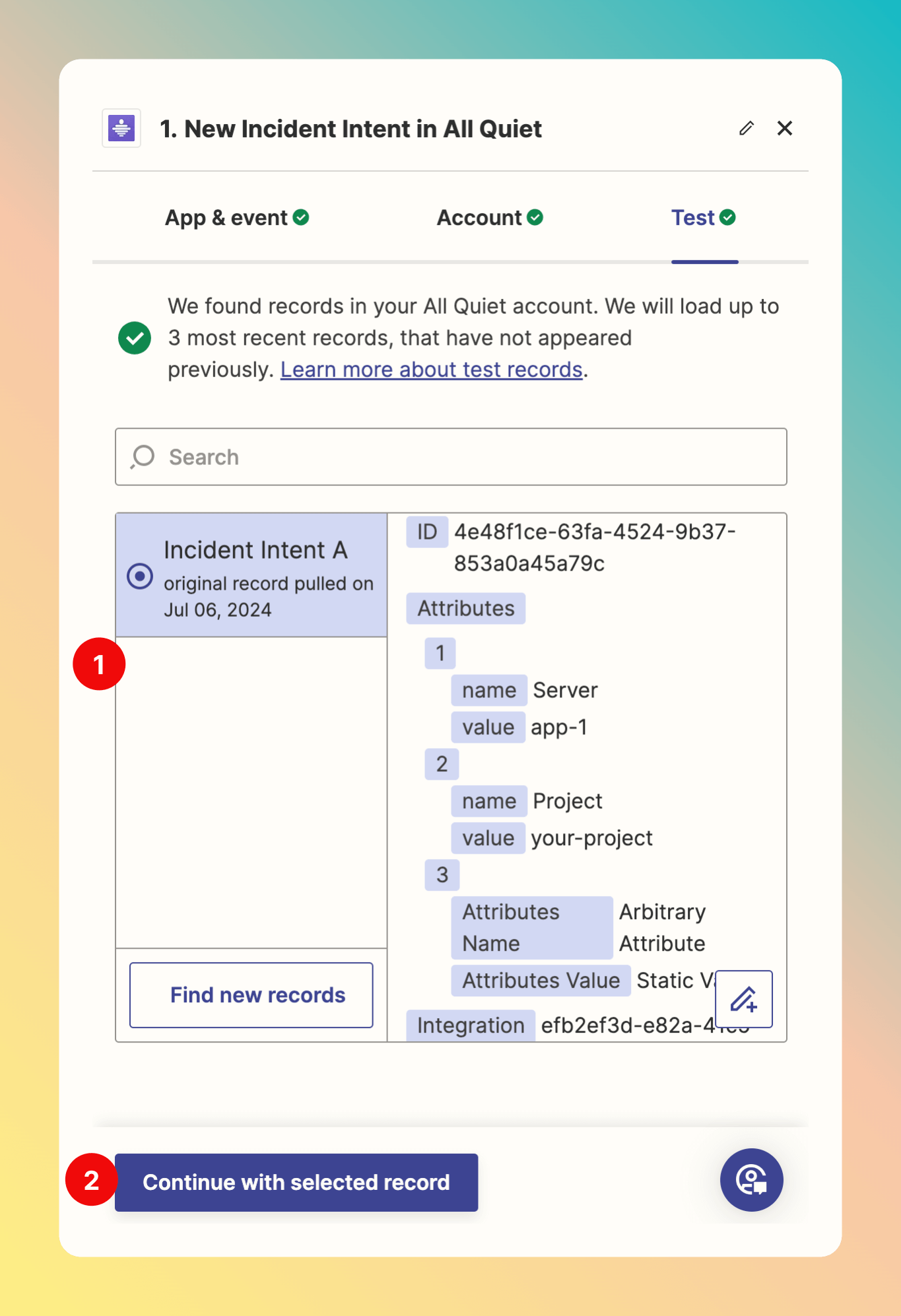
Add an Action based on the All Quiet Trigger
Now, you can select a Zap Action to trigger with you All Quiet incident.In this example, we want to use the All Quiet Trigger to send a new email via the Zapier Gmail integration. Instead of using Gmail, you could also use other Zapier integrations for an Action.
- Search for Gmail.
- Select it.
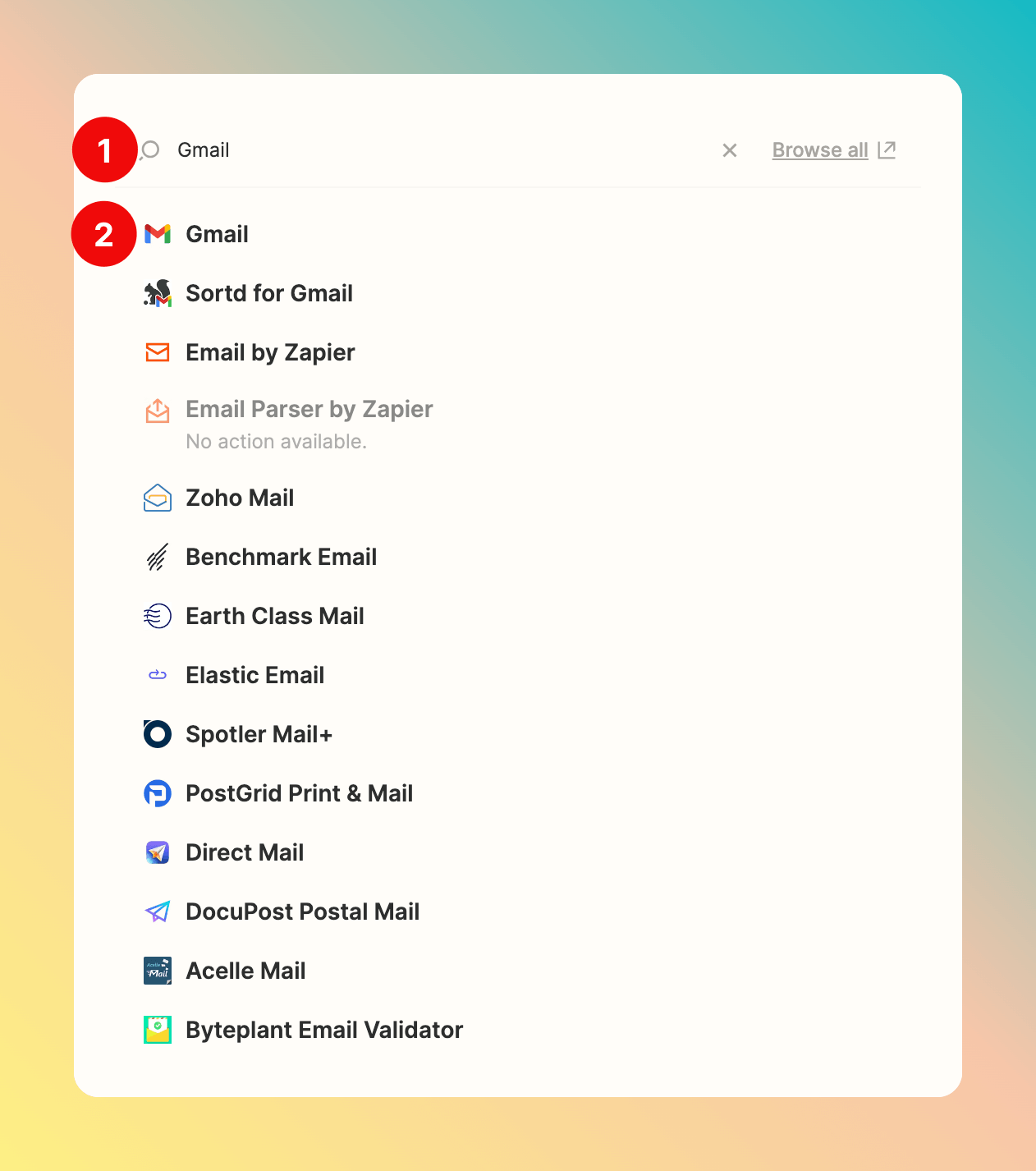
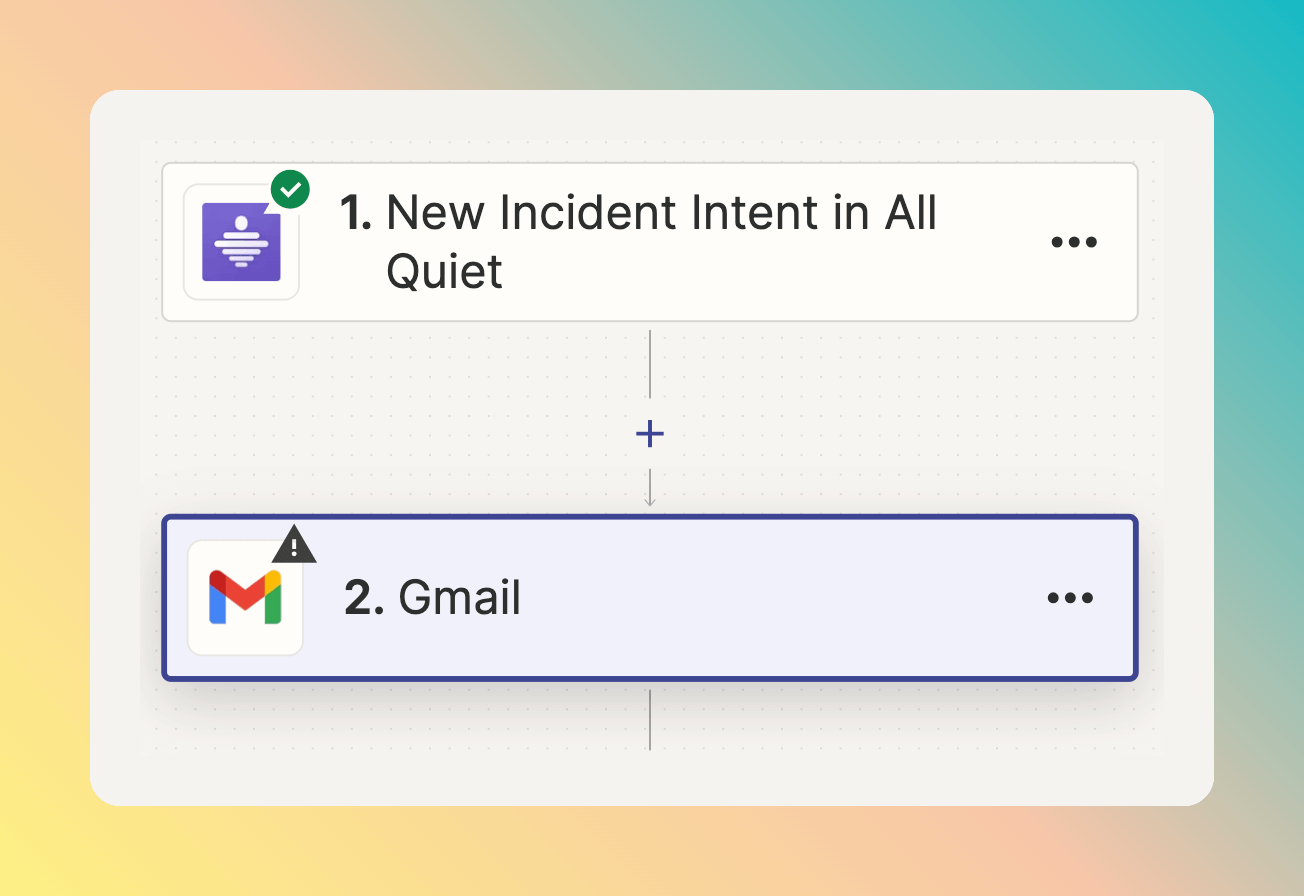
- Select an Event supported by the Gmail integration.
- Here, we choose “Send Email”.
- Click
Continue.
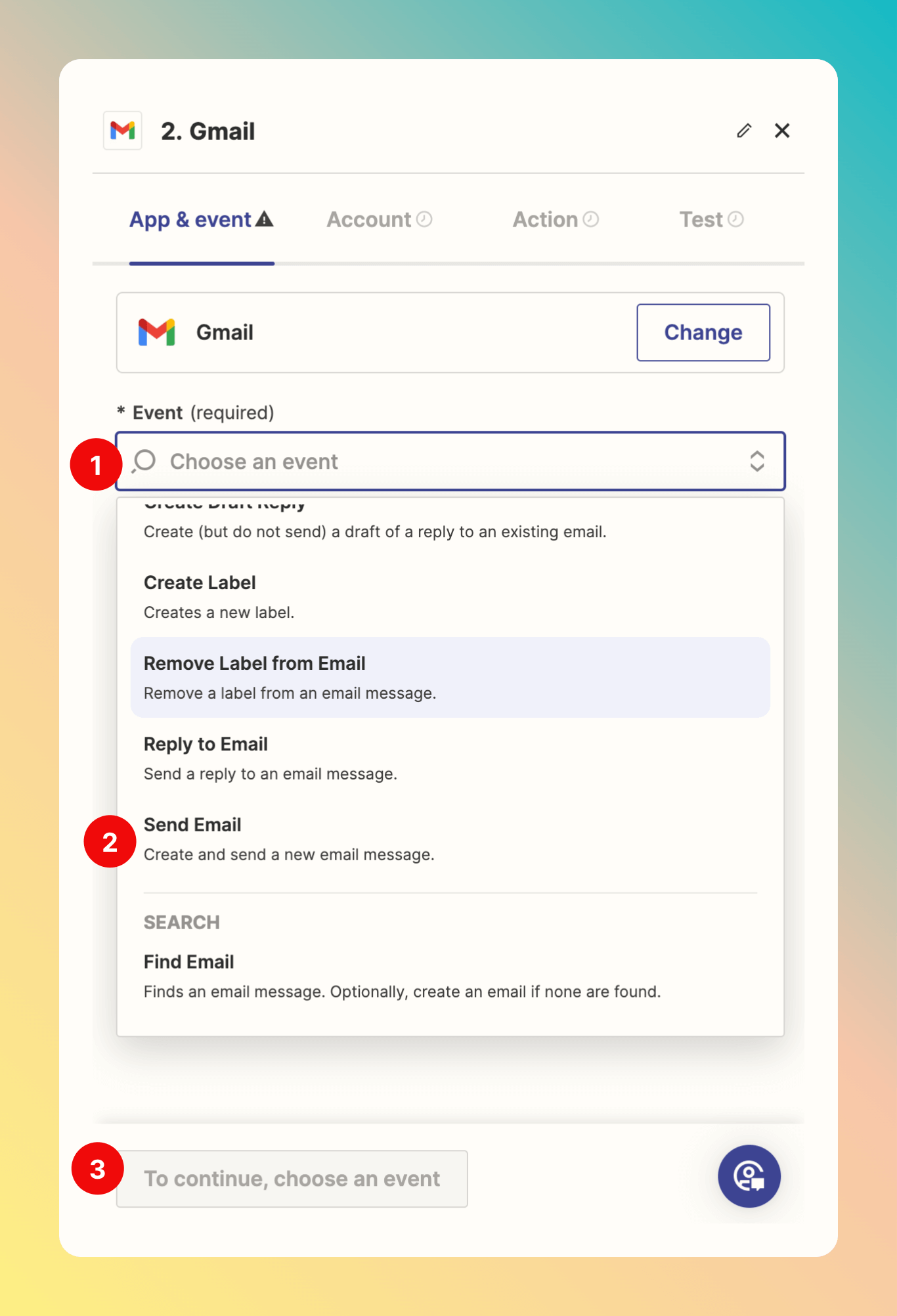
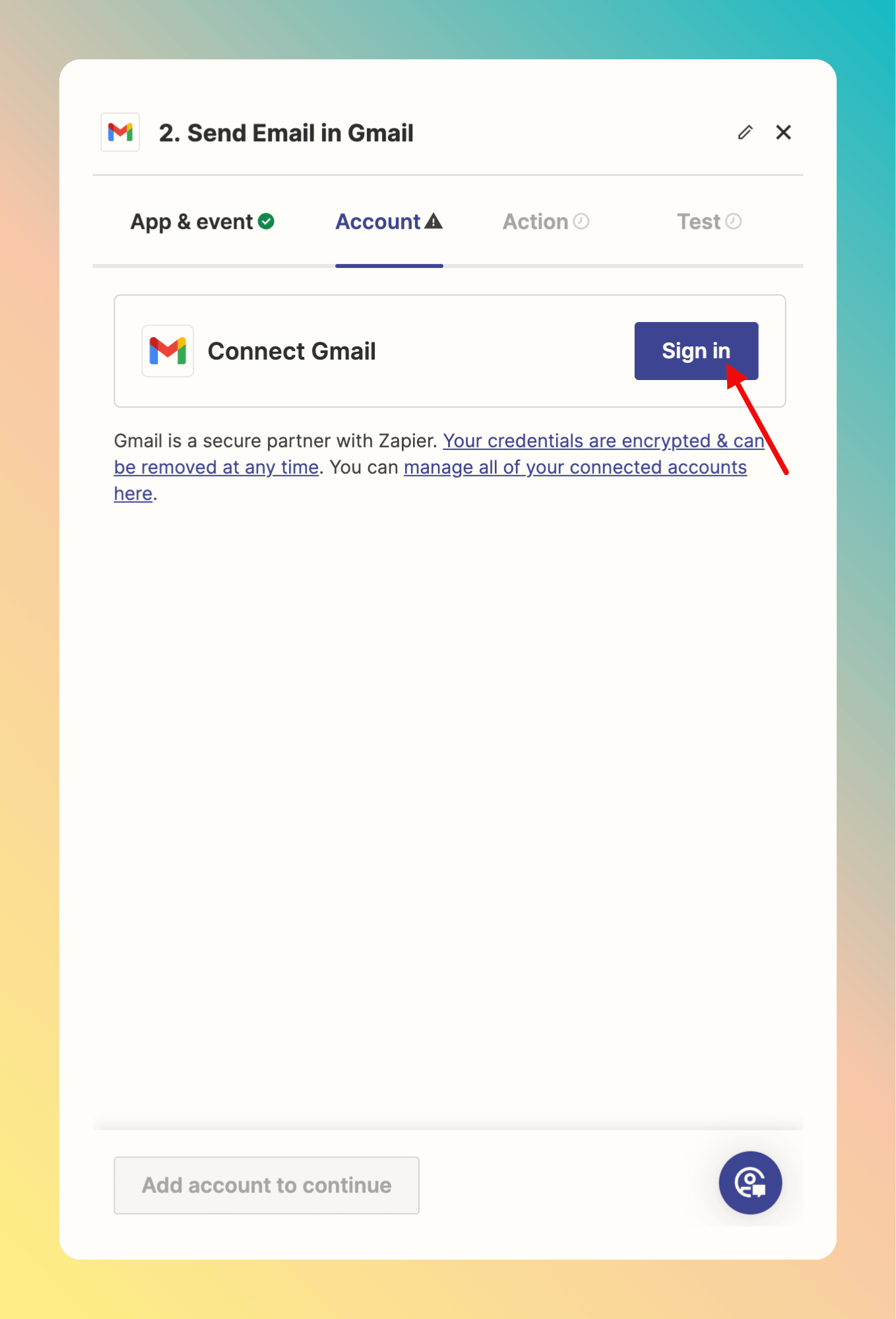
Continue to configure your action.
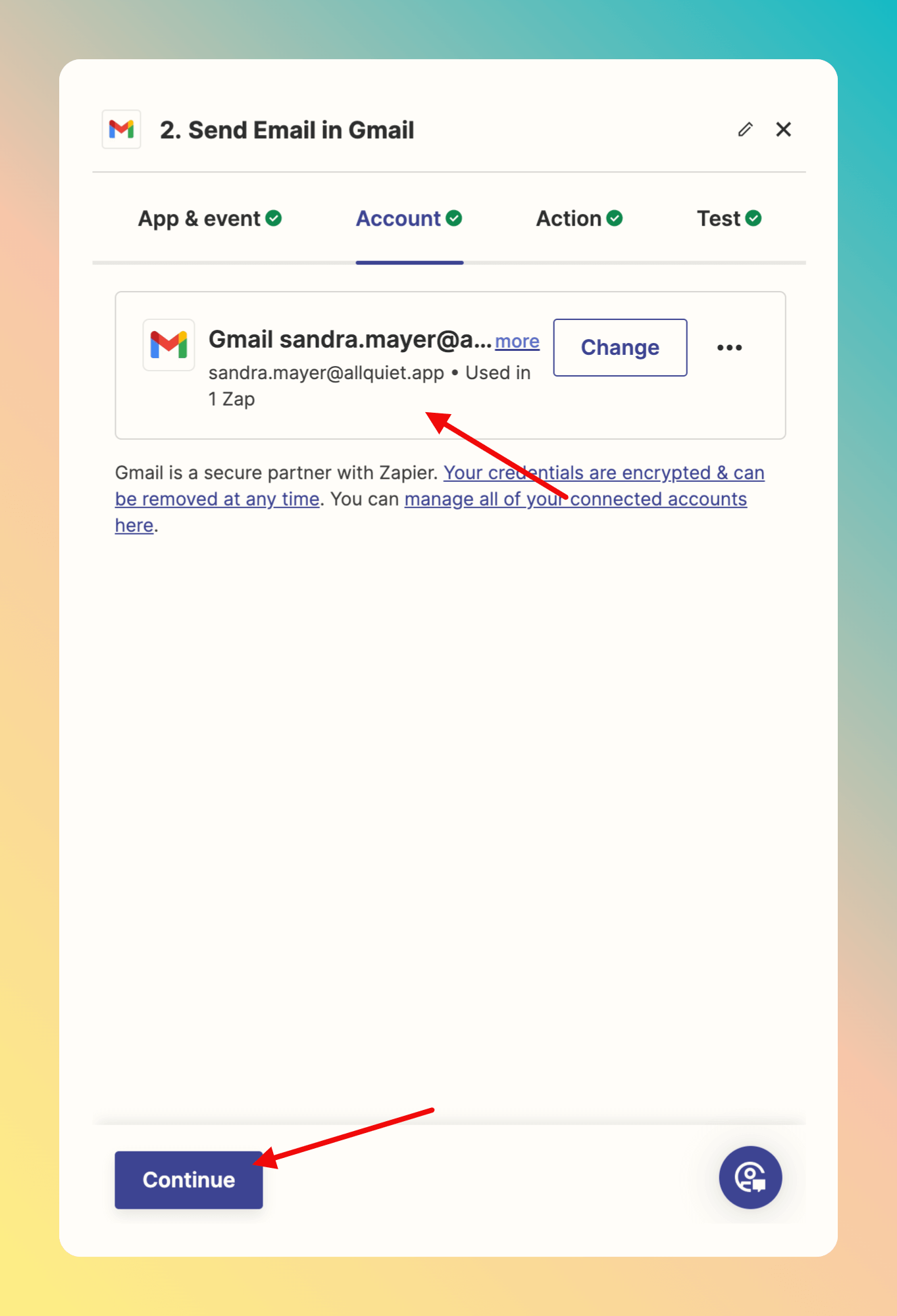
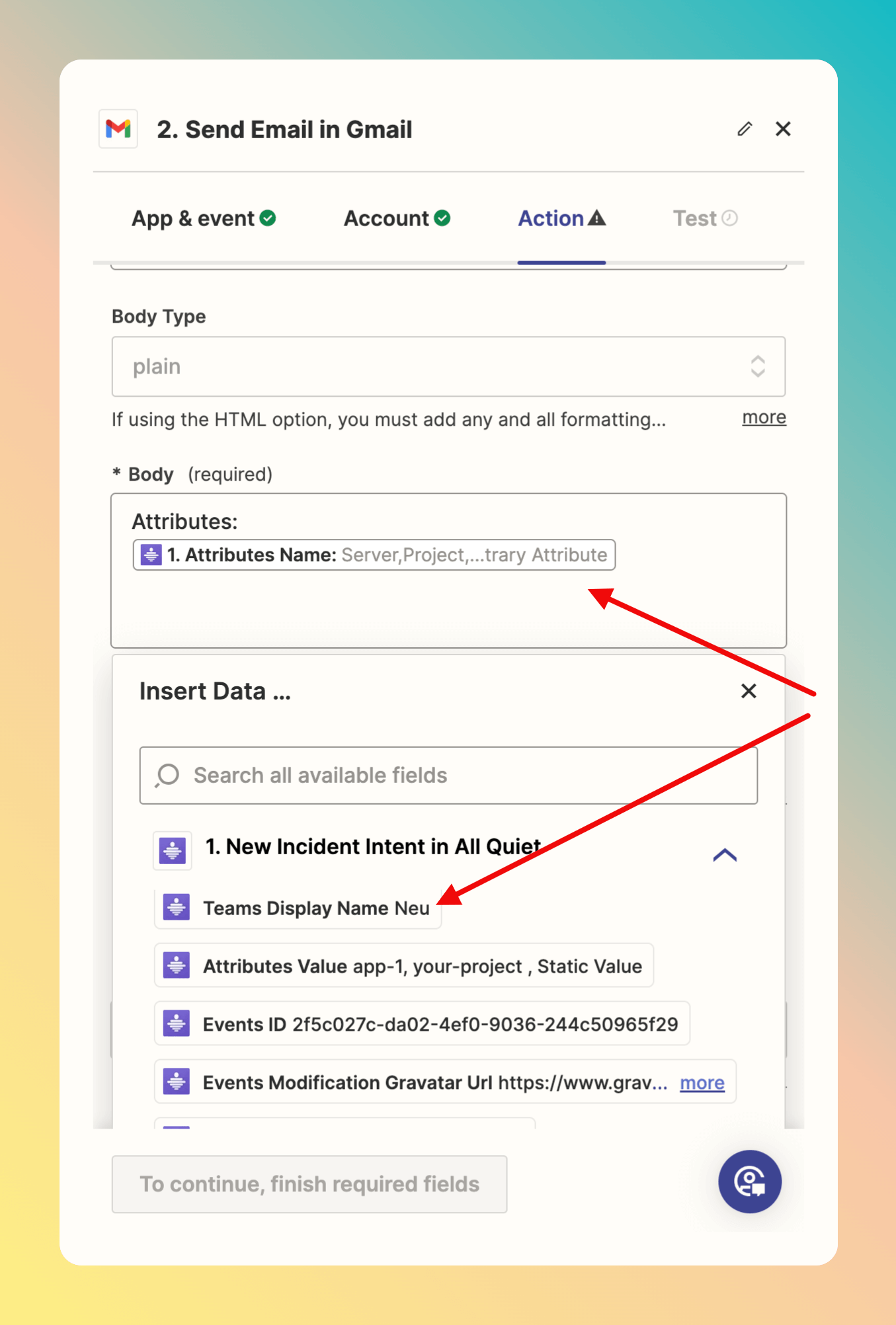
Continue.
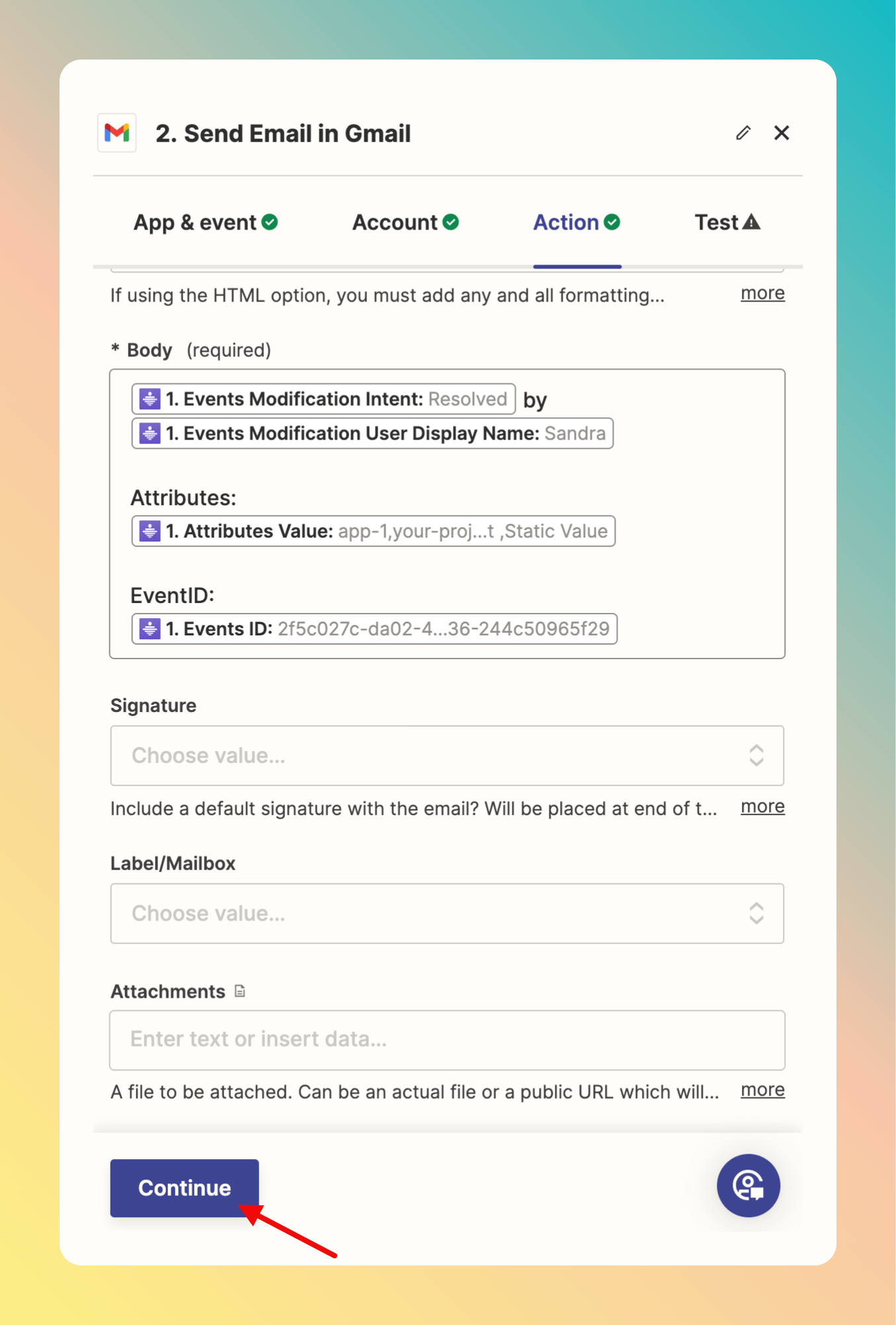
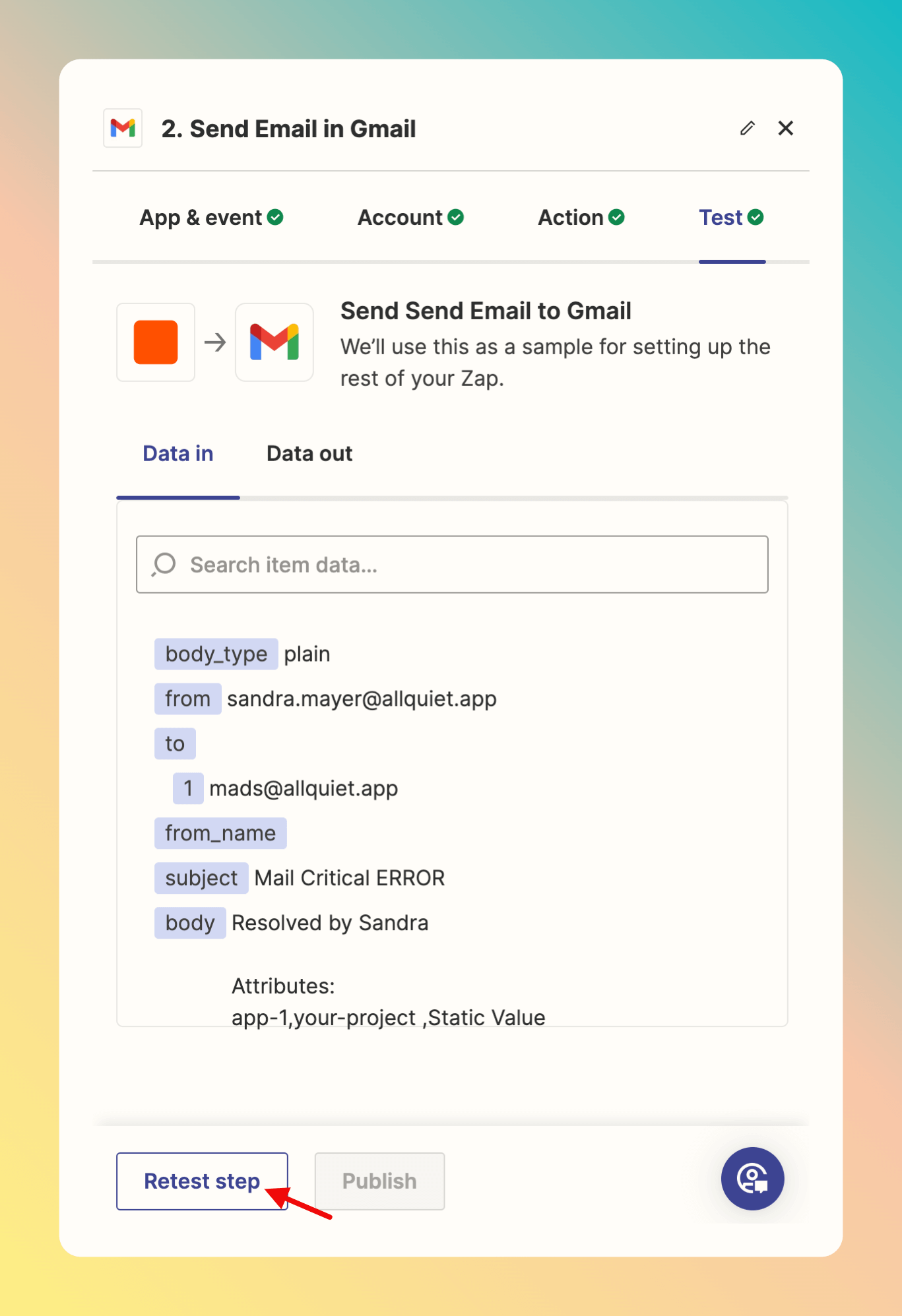
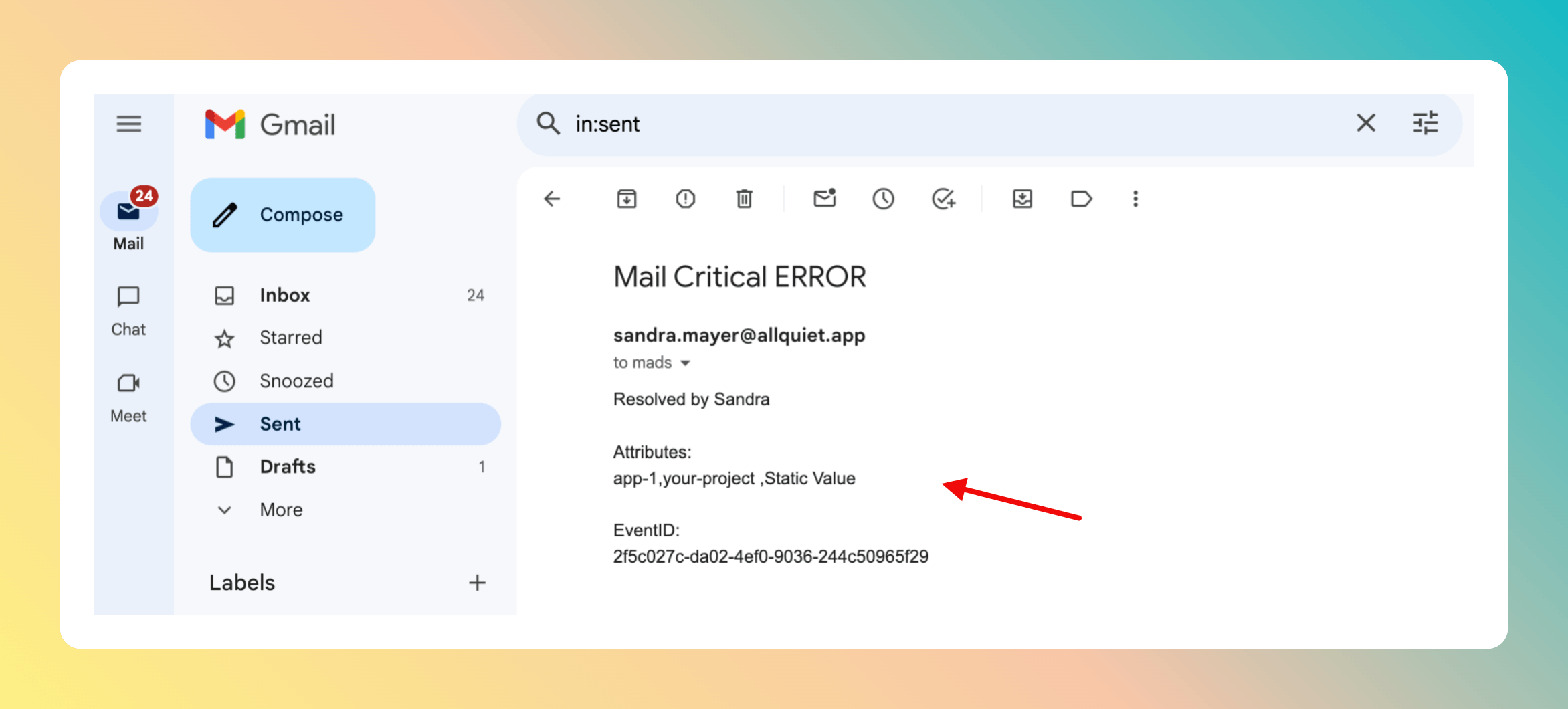
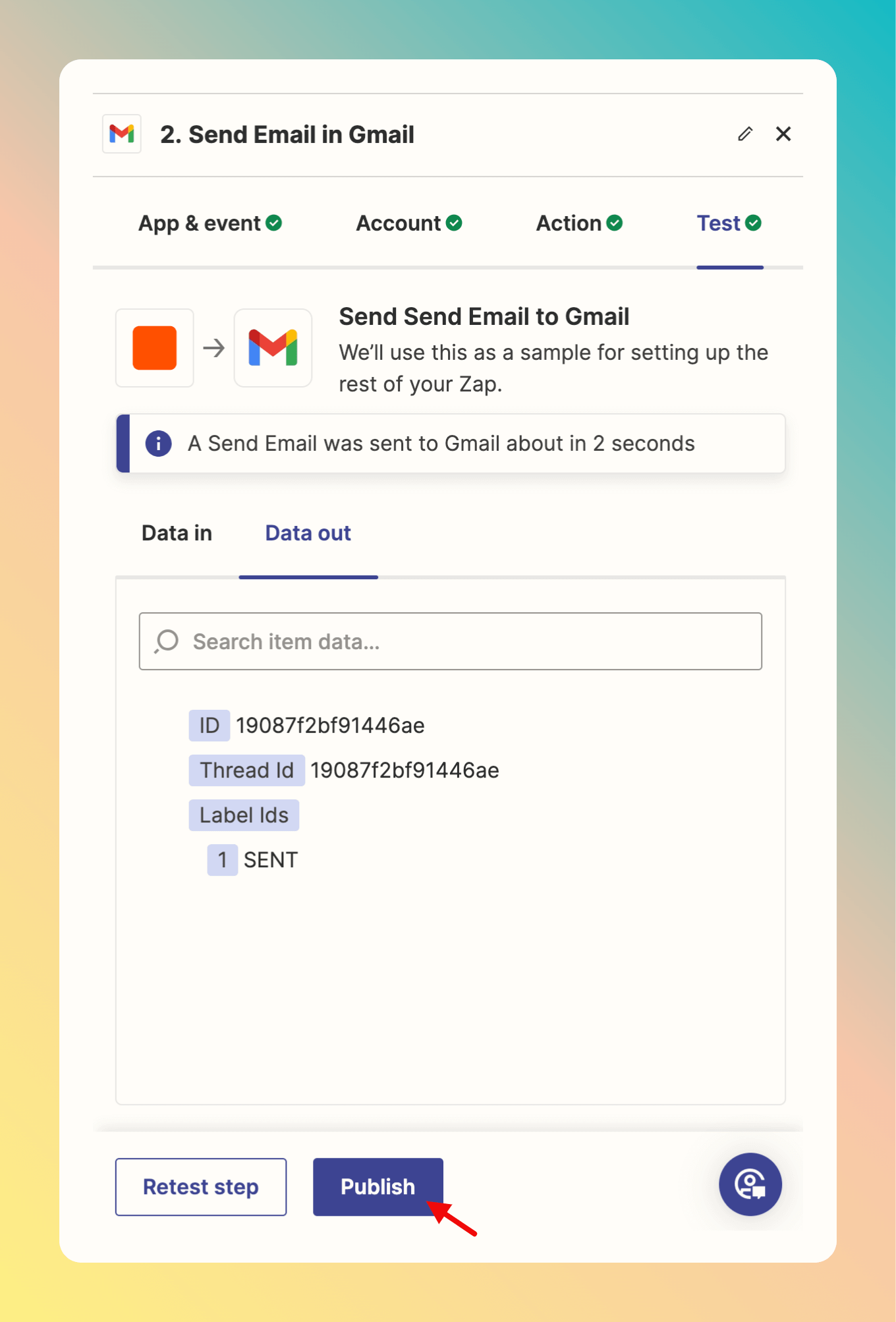
You successfully set up your Zapier Outbound Integration!